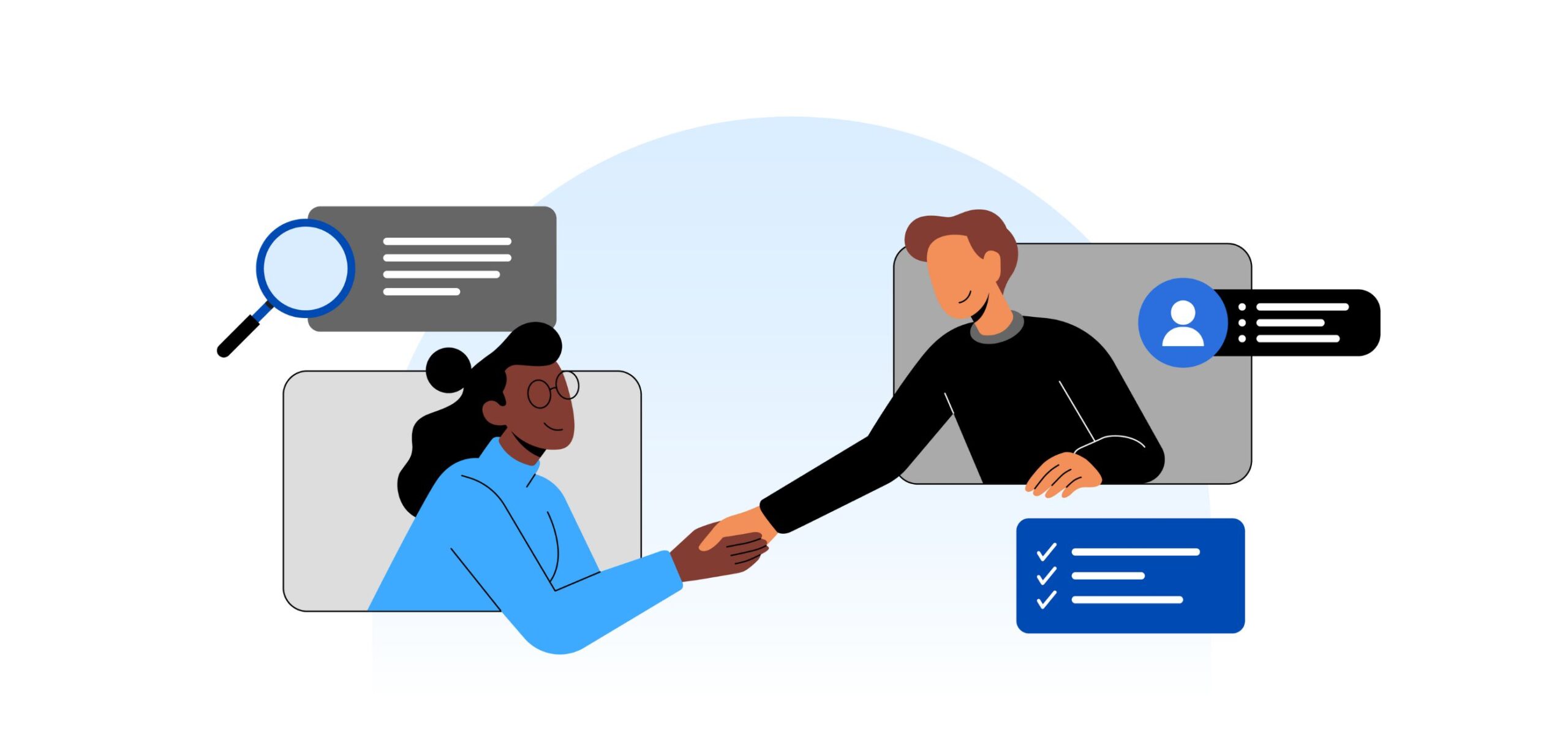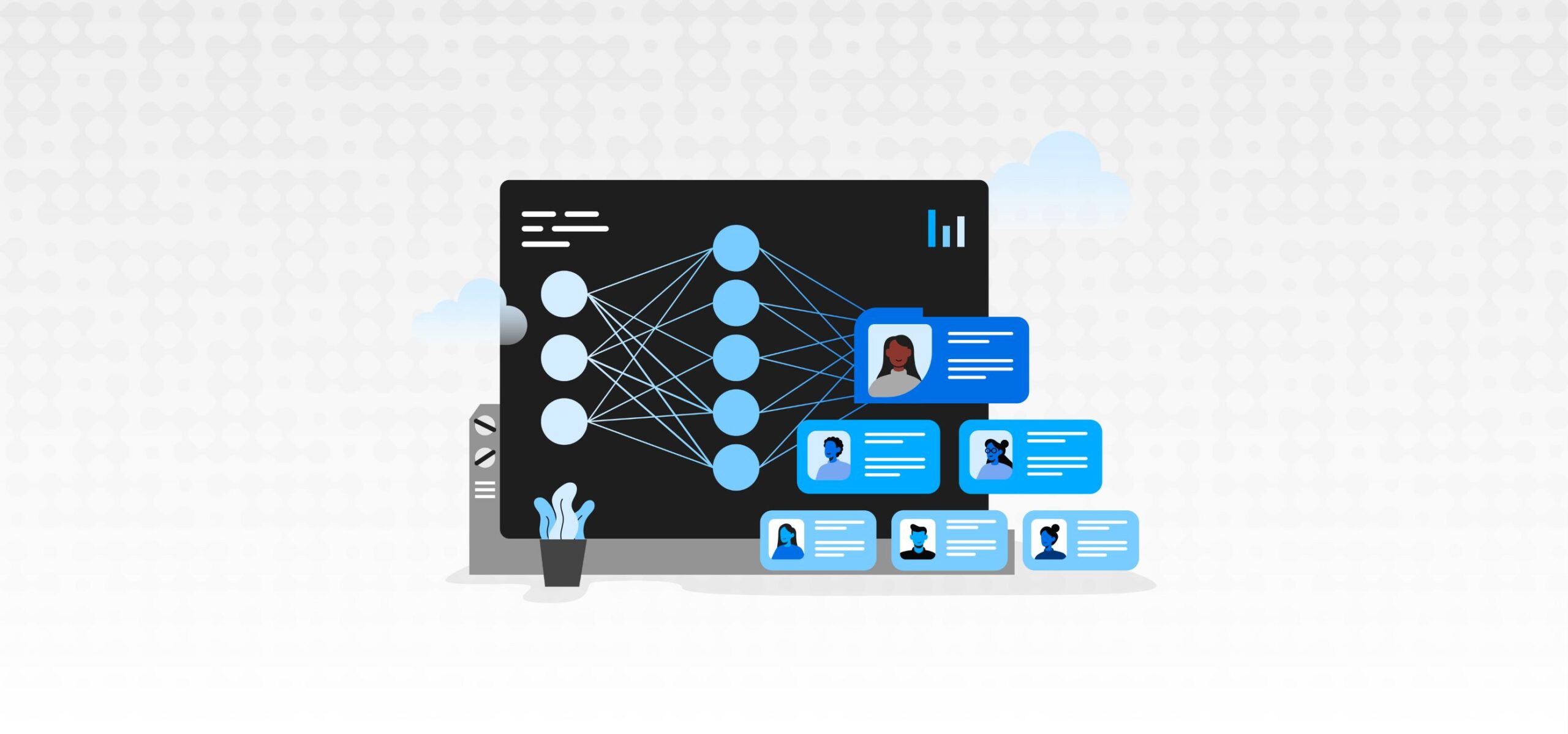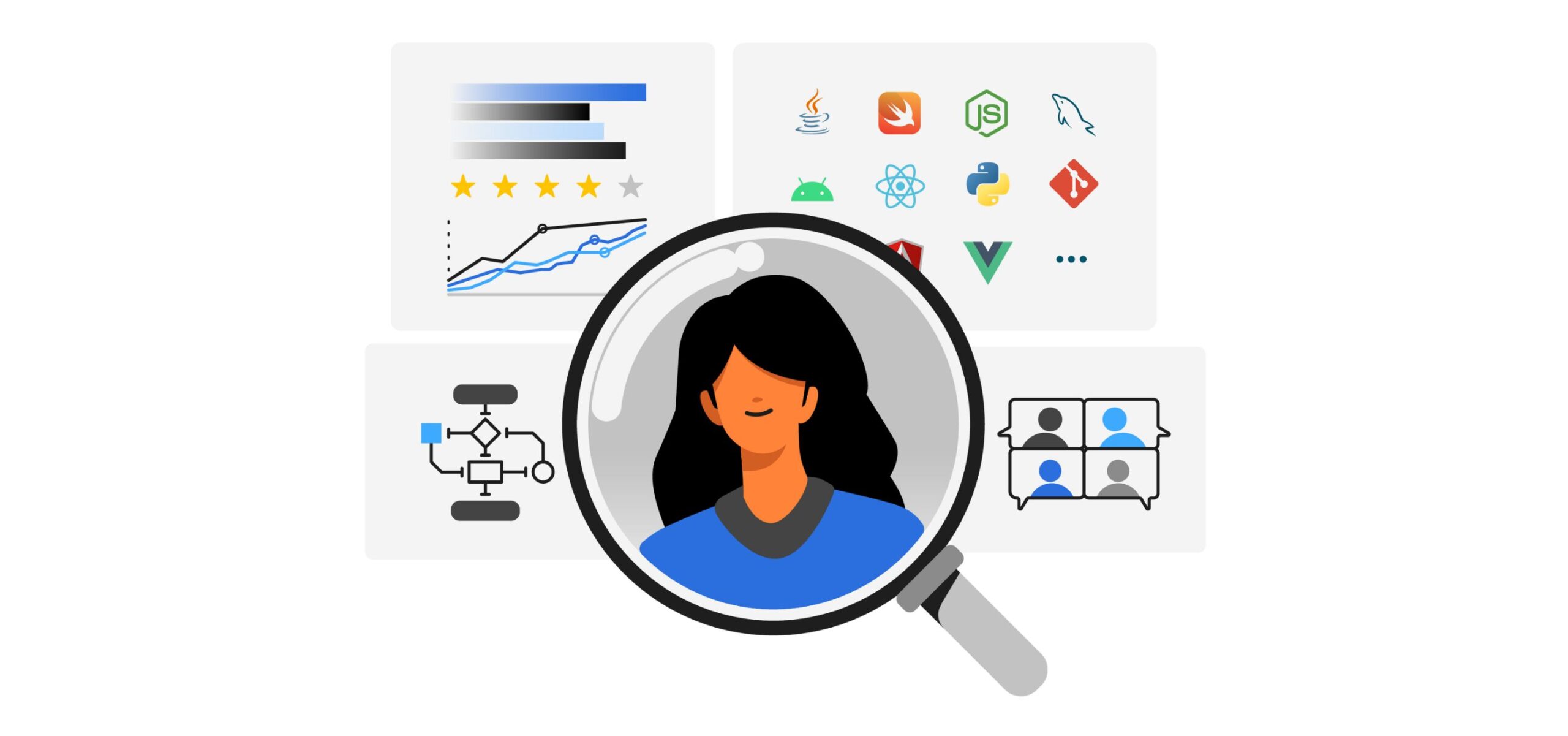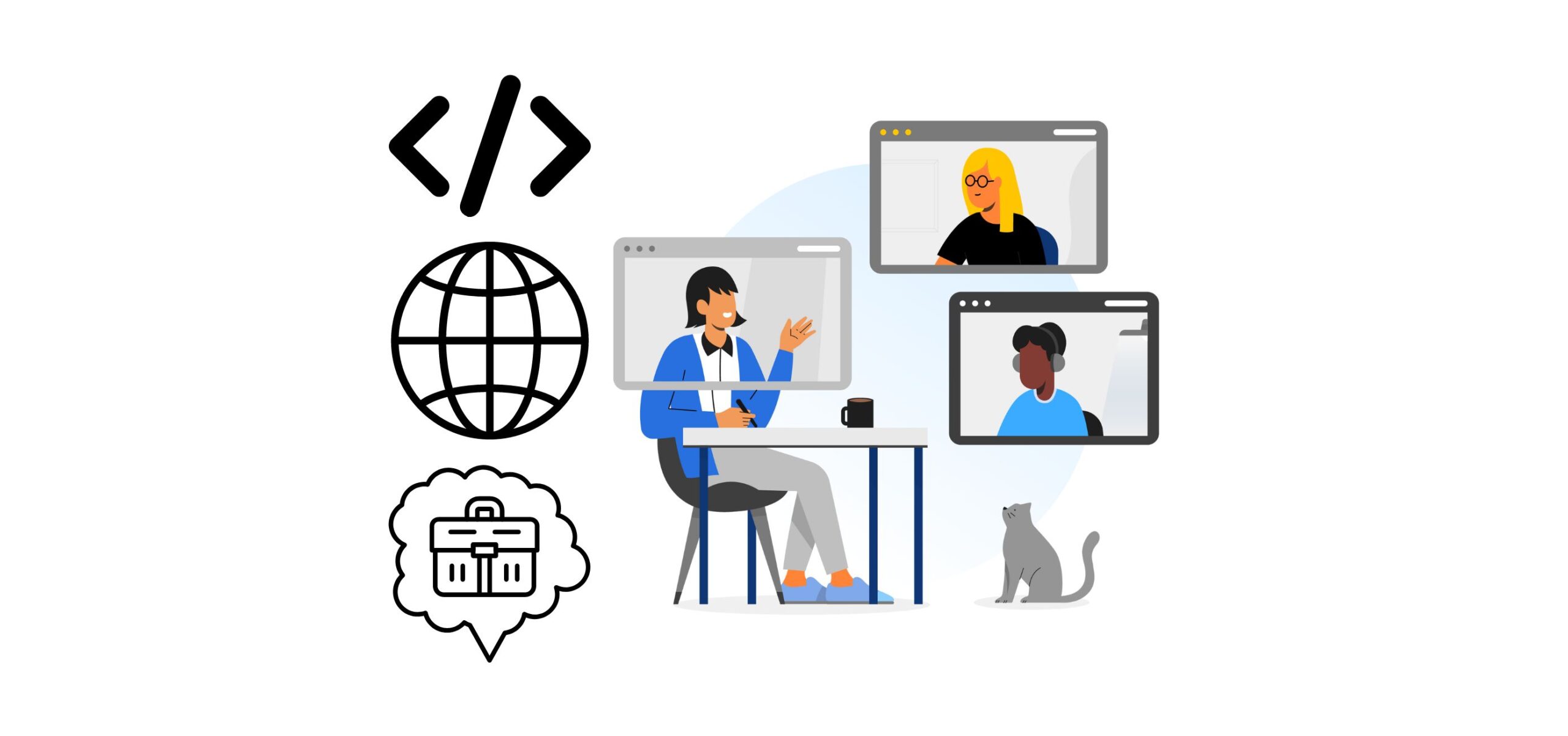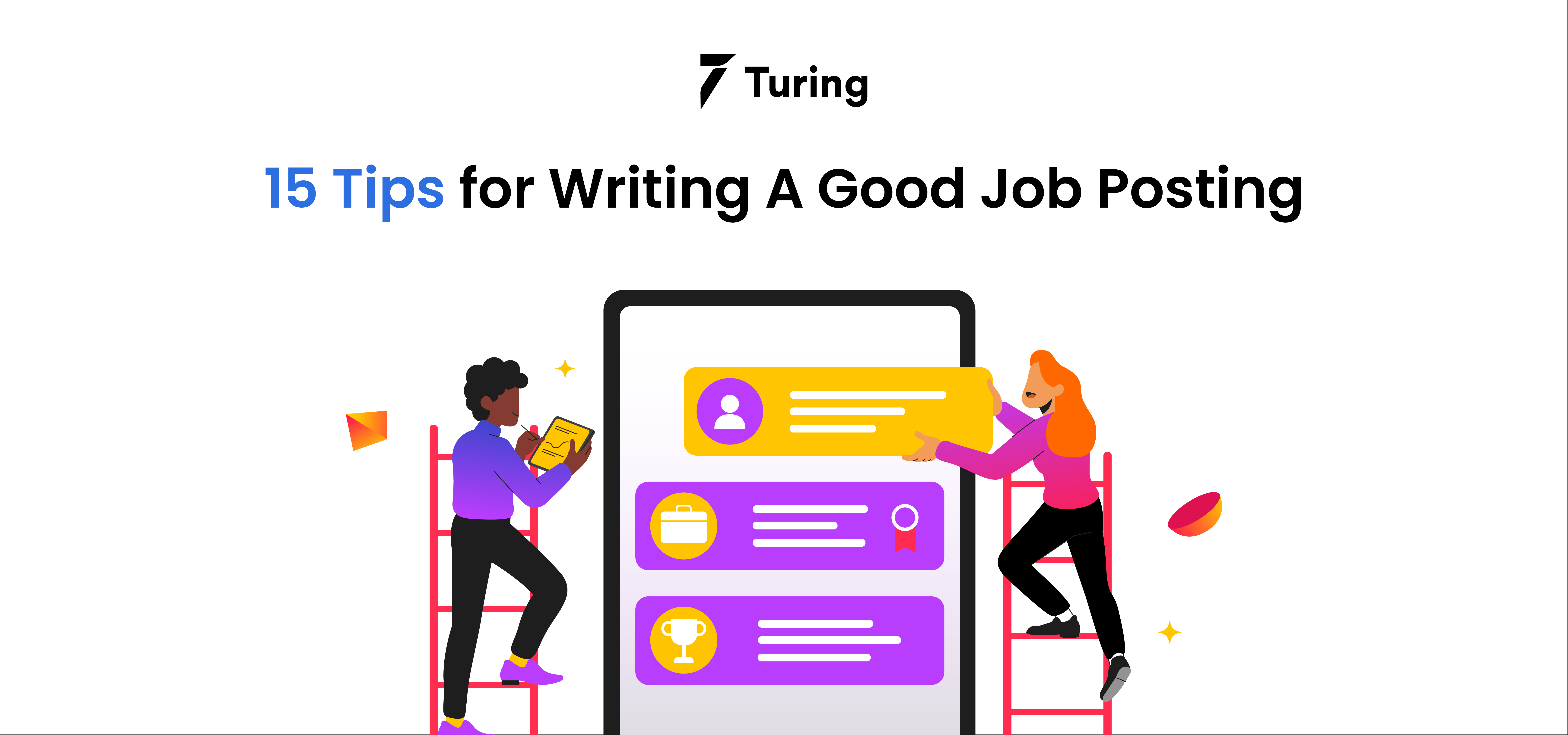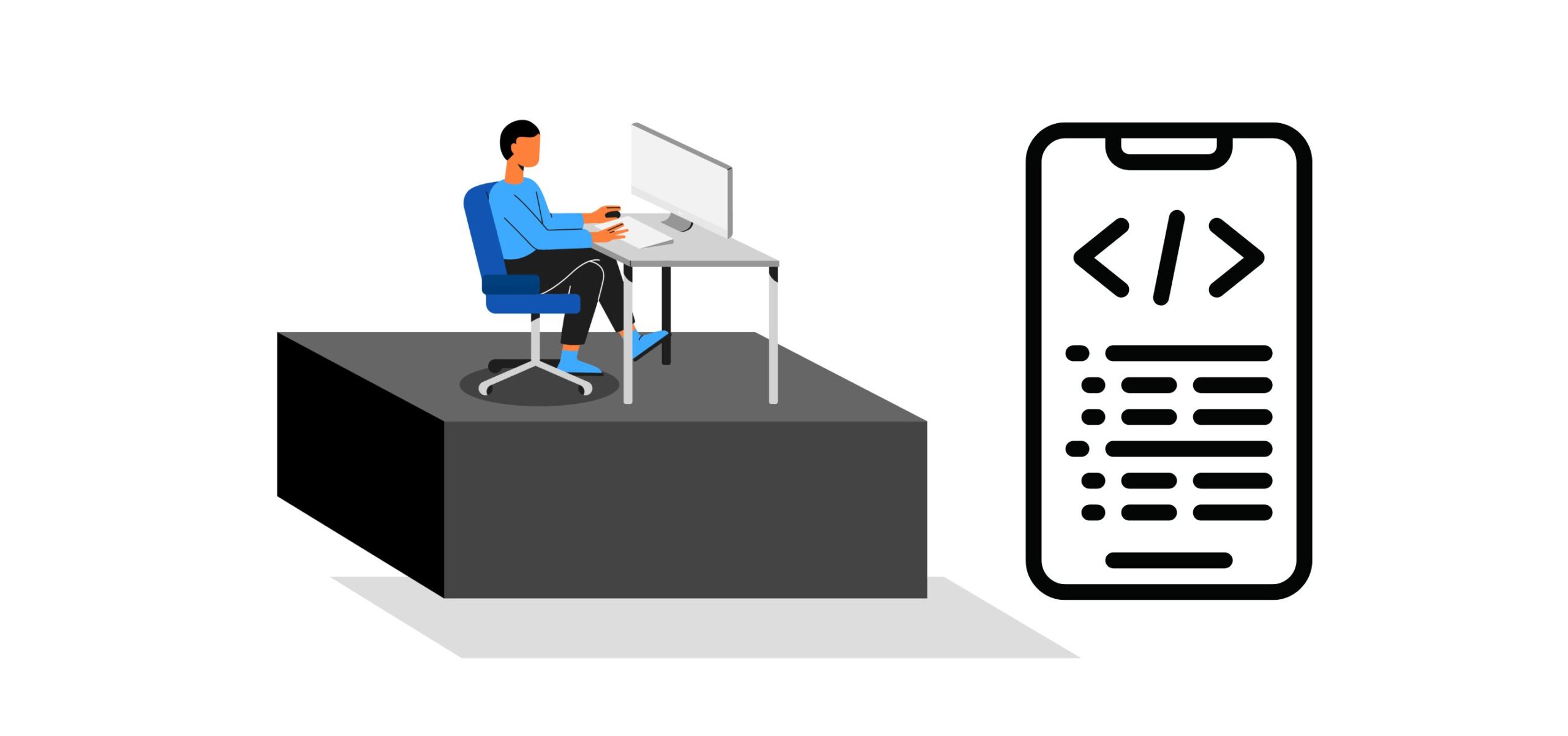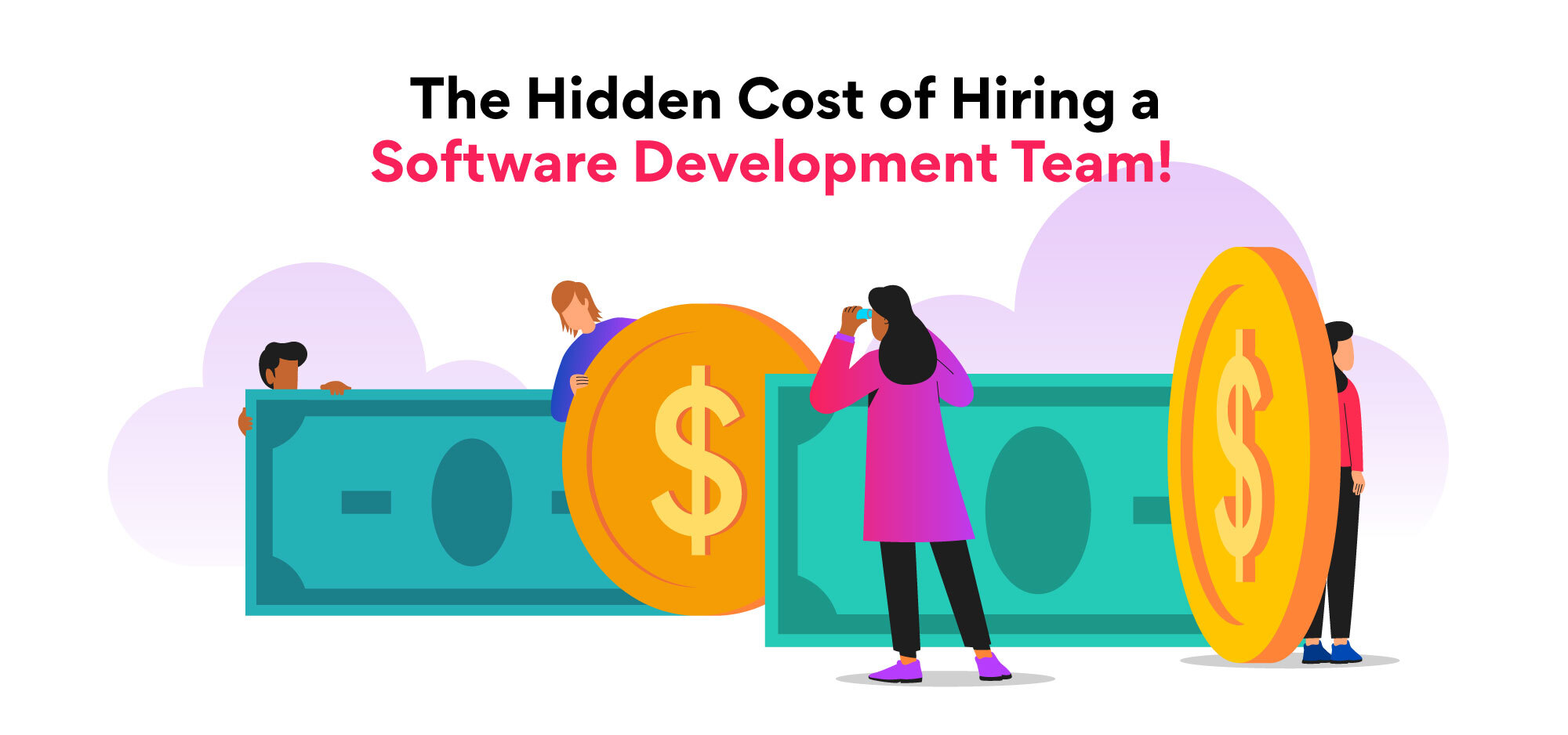What Is Data-Driven Recruitment and Why Do You Need It?
What is data-driven recruitment, and why do you need it? Well, gone are the days when candidates relied on local newspaper adverts or headhunters to get into the room with a top recruiter. The recruitment landscape has changed drastically over the last decade, where now, candidates use new-age methods to hunt jobs, from tailor-made recruitment platforms to social media posts. Hence, you must adapt accordingly and improve your recruitment process for hiring top talent.
Of course, recruiters depended on experience, gut feeling, and often blind luck to get the right candidate. Going through piles of resumes without knowing if the right person was somewhere in them was always the compromise. Moreover, whether the CV genuinely represented the truth about a candidate’s skills and knowledge was also unknown.
Thanks to modern-day technologies, you can boost your hiring process and make it more efficient. One of the best ways to do so is through data-driven recruitment. A data-driven recruitment process is quicker and more accurate, allowing hiring managers to recruit better candidates and save resources.
In this blog post, we’ll provide an in-depth overview of data-driven recruitment. Let’s dive right in.
What is data-driven recruitment?
Data-driven recruitment or data-driven hiring is an innovative approach to the hiring process that leverages data analysis and insights to make informed, objective decisions when selecting candidates. This method goes beyond traditional recruitment practices, which often rely on intuition and subjective evaluations, by using quantitative metrics and advanced analytics to identify the best talent for a given role.
By harnessing the power of data, organizations can gain a deeper understanding of their recruitment processes, identify patterns and trends, and make data-backed decisions to improve their hiring outcomes.
A data-driven approach to hiring is the direct result of modern HR technologies becoming normalized in the workforce, such as performance management platforms, HRIS (human resource information systems), and ATS (applicant tracking systems). These technologies all contribute to collecting a massive amount of recruitment data that data-driven recruitment can leverage.
In today’s fast-paced and competitive job market, finding the right candidate for your organization can be challenging. As mentioned earlier, companies face certain hurdles when it comes to the early stages of the hiring process, including speed, difficulty in finding qualified candidates, and potential biases. Data-driven hiring aims to solve these challenges by equipping hiring teams with concrete data that helps them hire accurately.
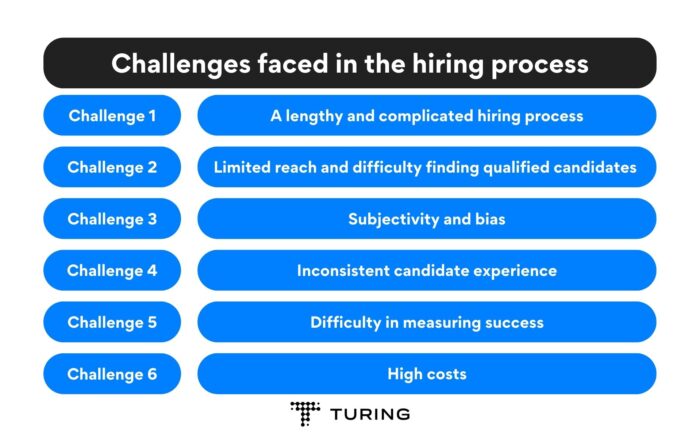
Challenges faced in the hiring process
Challenge 1: A lengthy and inefficient hiring pipeline
A slow and complicated hiring process can be a significant turn-off for potential candidates and lead to a higher drop-off rate, lower-quality hires, and increased costs for the employer. As a result, companies often struggle to attract suitable candidates and fill positions promptly.
Challenge 2: Limited reach and difficulty finding qualified candidates
Traditional hiring methods, such as job postings in newspapers or on company websites, may not reach a wide or diverse pool of candidates, limiting the organization’s ability to attract top talent. In some cases, the requirements for a job may be too specific, causing difficulties in finding candidates who are a good match. Additionally, the job market may be saturated with too many candidates, making it problematic to find the right people for the job. Finally, a poorly written job posting can negatively impact the quality of candidates who apply.
Challenge 3: Subjectivity and bias
Bias can occur at various stages of the hiring process, such as resume screening, interviews, or reference checks. Such bias can lead to discrimination against certain groups of people, including those based on race, gender, age, or sexual orientation. As a result, companies risk losing out on talented candidates, reducing their pool of applicants, and potentially facing legal consequences.
Challenge 4: Inconsistent candidate experience
The candidate experience can vary greatly in traditional hiring processes, depending on the interviewer’s style, communication, and approach. This inconsistency can lead to a negative perception of the organization and impact its ability to attract top talent.
Challenge 5: Difficulty in measuring success
Without data-driven metrics and analytics, it can be tricky to measure the success of traditional hiring methods and determine their effectiveness in meeting company goals.
Challenge 6: High costs
Traditional hiring methods can be expensive, especially when considering the hidden cost of hiring like advertising, recruiting agencies, and the time spent by hiring managers and HR professionals in the process.
Solving the problem with data-driven hiring
To overcome these challenges, companies turn to data-driven recruitment, which involves using techniques, technologies, and data to analyze large talent pools and determine the right candidates with ideal skill sets.
For instance, you can use machine learning algorithms to improve the hiring process by adopting a data-driven hiring approach. This will automate your hiring process making it more efficient. The following are the three easy steps to building a machine-learning model for a data-driven approach to hiring:
Step 1: Feature engineering for the candidate
In this step, we collect and analyze the data that make up the candidate’s profile, including soft skills, technical skills, and work experience. The data collected is then used to build features relevant to the hiring success rate.
Also, read: Why Is Skill-based Hiring Important for Software Development?
Step 2: Train the machine learning models
Once we establish these features, we can train machine learning models using the data collected. In this case, we’ll be using logistic regression and gradient-boosted decision trees to build models that predict the success rate of a candidate.
Step 3: Automating the hiring process
Finally, we can use the models we’ve built to automate the hiring process. Now these models can be super helpful. For example, the models can analyze candidate profiles and determine their likelihood of success in a particular role.
This analysis can help reduce the time and cost of the hiring process, eliminate biases, and improve the quality of hires.
Hence, as you can see from this example, a data-driven recruitment process can help analyze a large amount of data to help you target the right candidates. Over time, your system will analyze the data and offer new insights into key metrics like cost, efficiency, and quality, allowing you to hire the best-suited talent hassle-free.
Why is data-driven recruitment a top priority for businesses?
A data-driven hiring process has become extremely crucial today to make the most of all the data available. It answers the problem of having ample recruitment data and not knowing what to do with it. More importantly, this new-age recruitment method helps companies improve key metrics in every stage of their recruitment funnel. Here’s how:
- Data-driven hiring lets you examine vital insights regarding sourcing leads and the overall application process to understand where improvements can be made to obtain more qualified candidates.
- Data-driven recruitment also helps analyze candidate engagement data. This way, your team can learn what schedule of emails, texts, or other outreach modes lead to maximum conversions (for example, sourcing and getting a candidate “in the door”).
- This type of hiring also allows you to review your talent acquisition team’s interviewing techniques to determine if any changes should be made. These changes can further optimize the hiring funnel to get more prospective candidates to accept your offers, or even implement strategies to prevent them from not considering your offer.
What are the benefits of data driven recruitment?
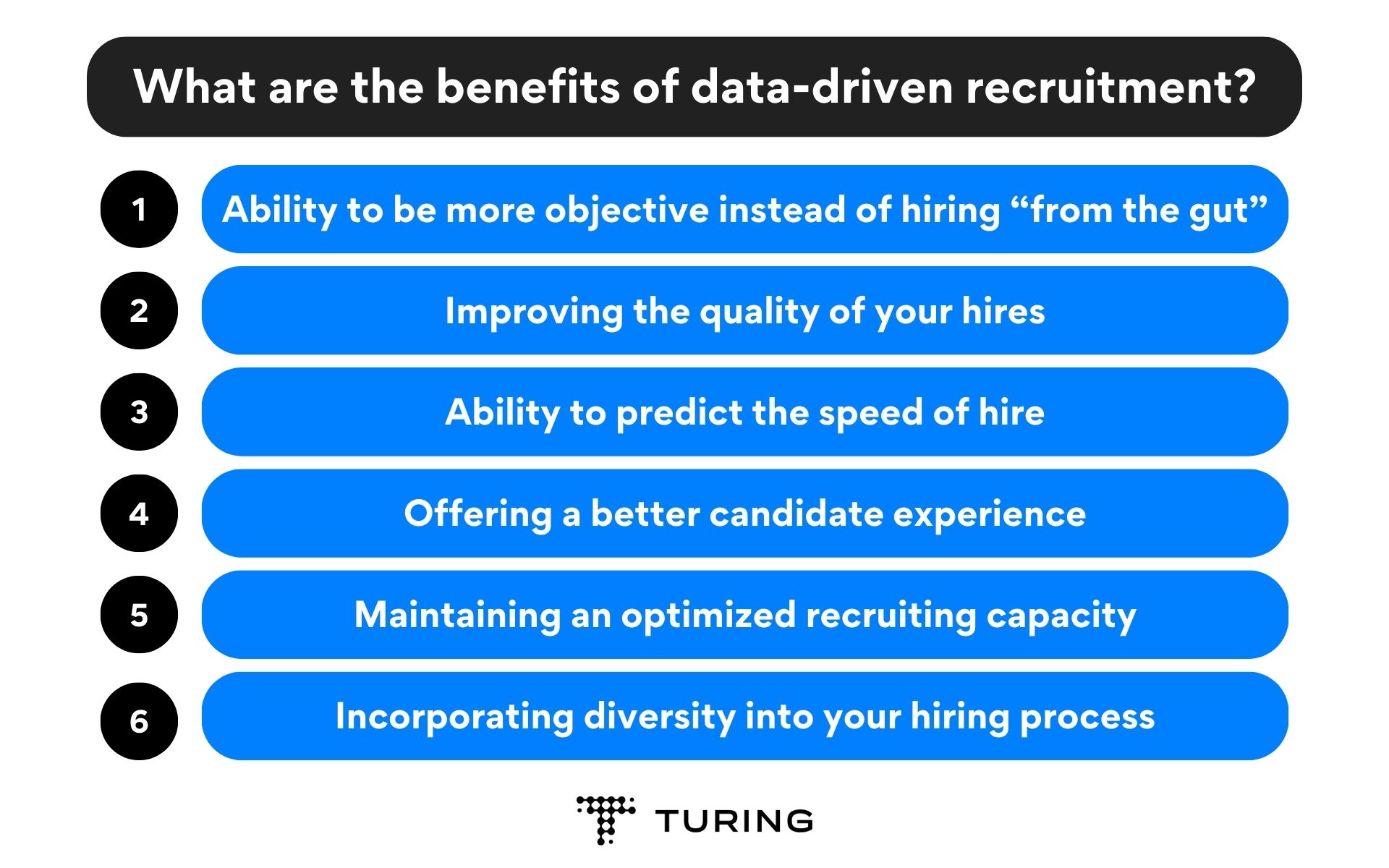
Benefits of data-driven recruitment
Data driven hiring presents a largely audacious goal of revamping traditional hiring through data. Instead of only relying on cover letters and resumes, data-driven hiring involves gathering data from multiple sources, including previous jobs, social media activity, online publications, etc., to make a hiring decision.
Like any new technology, data-driven recruitment is a daunting solution to adopt. However, there are many proven benefits it offers that will encourage you to implement data-driven hiring. Let’s go over what these key benefits of data-driven recruitment are.
-
Being more objective instead of hiring “from the gut”
As a recruiter, you have probably been here more than once: choosing between two or more well-qualified candidates with almost nothing to decide which one is ideal for the role. In such a scenario, many often rely on a bias or emotion to make a decision “from the gut”.
This is where data-driven recruitment proves to be highly effective by highlighting variables you missed or haven’t seen previously. Maybe there’s a key metric hidden in one of the candidates’ work history that makes them better than the rest. Or, perhaps they possess the same character traits that several of your current top performers do, which makes them the right choice. Data-driven recruitment helps to gather and analyze such data, giving you a more in-depth view of hiring situations. Hence, instead of just relying on your gut, you can be objective in your decision-making and ensure a good hire. -
Improving the quality of your hires
As you may have already understood, data-driven recruitment helps you make more objective and informed hiring decisions. Using recruitment analytics and candidate data, you can better understand who to hire, which, in turn, results in a better quality of your work. This is the same for almost every industry.
A good candidate may have a bad interview. Usually, you would decline them, but a data-driven hiring model will provide more insights to ensure you don’t miss out on a good hire. From personality testing and skill competency tests to assessments, there are numerous quality indicators available through a data-driven hiring process that are better than a CV. -
Ability to predict the speed of hire
A major bottleneck most hiring teams face is the inability to form accurate hiring time estimates. However, with data-driven hiring decisions, this problem can be easily solved. Properly analyzing recruitment analytics will enable you to confidently determine how long it will take to hire for a specific role. Moreover, data will also help you understand how much time each stage of your hiring process will occupy.
Therefore, data-driven recruitment can help optimize your hiring process and inform stakeholders about hiring times more accurately, Plus, you will be able to determine if any particular stage in your hiring funnel is slower and make the necessary adjustments to expedite it. -
Offering a better candidate experience
Candidate experience has been a trending subject for decades. But, companies today still struggle to optimize their candidate experience, which is an essential part of the hiring process. There are various areas your TA team or hiring unit may need to work on, from timely communication with candidates to putting up more eye-catching JDs on platforms. But, how will you know exactly where your company needs improvement?
Analytics assessed during data-driven recruitment highlights the areas that impact candidate experience the most, allowing your team to assess how effective each one is. Whether it’s the duration since initial contact, the interviewer’s name, the time between each hiring stage, etc., you will be able to understand what’s increasing or decreasing the probability of a candidate withdrawing their application. This will enable you to understand where they’re dropping off and implement strategies to decrease the likelihood of losing skilled candidates.
Such capabilities of utilizing metrics for hiring decisions are why data-driven hiring has grown to become one of the best recruitment improvement ideas businesses can readily adopt today. -
Maintaining an optimized recruiting capacity
Recruitment requires a fine balance as over-hiring can cause cost burdens, and under-hiring can decrease the overall productivity of your team. To stay on track, you need data-driven recruitment strategies that are consistently updated to indicate the current state of your organization.
Data-driven recruitment, done in collaboration with finance and TA teams, will help you establish highly-accurate hiring strategies. Through such strategies, you can use forecasts that are made from historical rates for various key factors like hiring success and employee turnover.
Additionally, these data-driven hiring decisions, which incorporate data extracted from recruitment analytics, offer a holistic overview of spend. Hence, you will quickly know if you’re overspending on recruitment or not spending as effectively as you should. This is because your established strategies via data analysis can help you seamlessly compare the costs of activities like agency, internal, or RPO (recruitment process outsourcing) hiring. -
Incorporating diversity into your hiring process
Lastly, if you have diversity targets or you want to ensure equity while hiring, traditional hiring models will barely be of help. Instead of leaving things to guesswork, you can use data-driven recruitment to constantly monitor your hiring funnel for key demographic ratios like ethnicity, gender, and veteran status. Through this, you can better track diversity and increase it across your recruitment pipeline.
Also, read: Diversity Hiring: How to Hire Diverse Talent for Your Company?
How to use data-driven recruitment strategies: best practices to follow
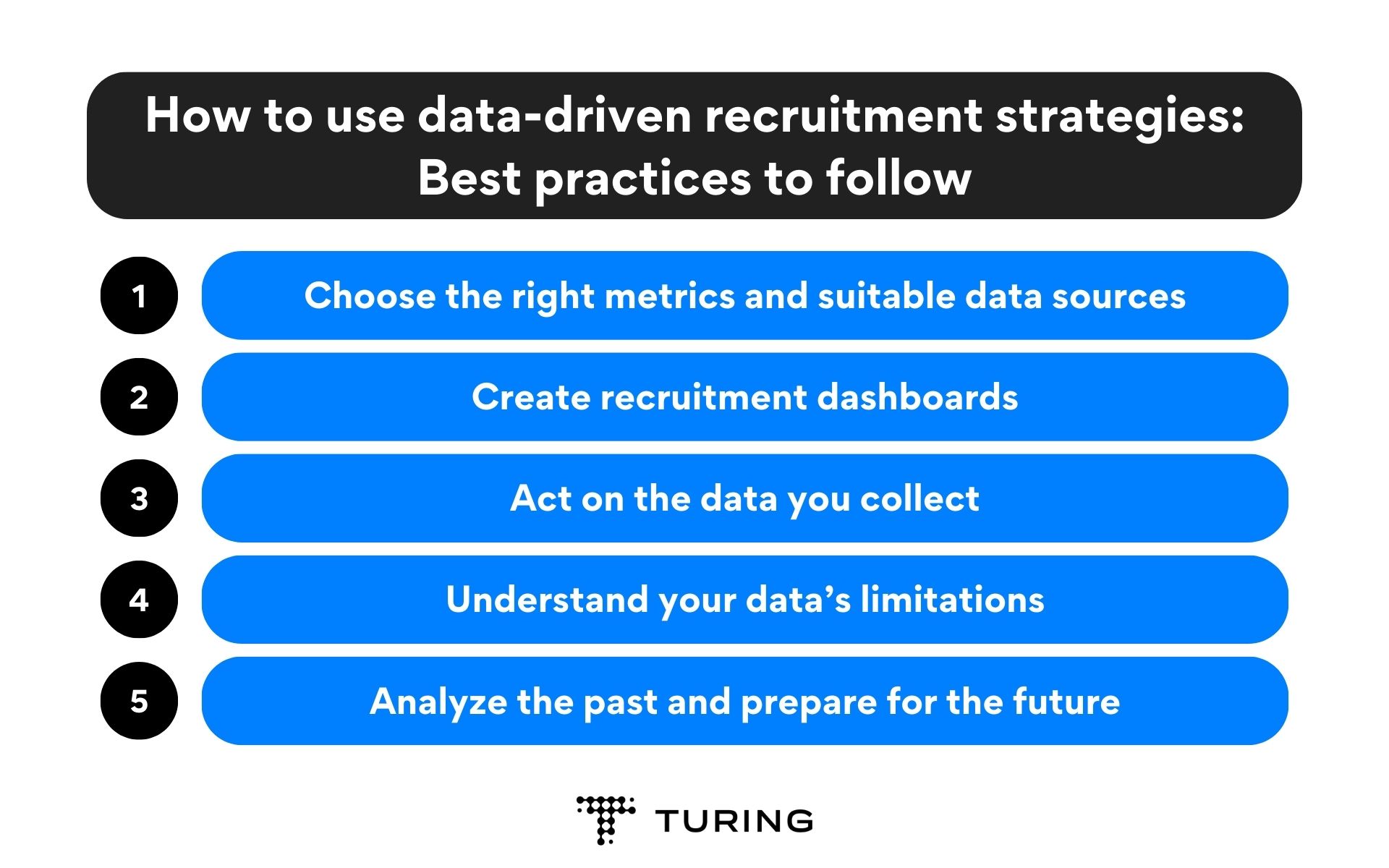
How to use data-driven recruitment strategies?
Given how lucrative data driven recruitment is, there’s no denying that it’s here to stay. However, teams must implement it correctly to reap its benefits. Thus, here are the best practices you must follow when incorporating data into your recruitment.
-
Choose the right metrics and suitable data sources
Data-driven recruitment analytics will collect a large amount of data from various parts of your hiring funnel. Hence, it can be overwhelming to choose what data you must pay attention to.
Most companies measure the quality of hire as this metric highlights the overall effectiveness of a hiring process. You can start with that, and then choose from other recruitment metrics like:
- Time-to-hire (time spent between the initial moment of approaching a candidate and them accepting your offer)
- Cost-per-hire (how much money was spent in hiring a single candidate)
- Time-to-fill (the average time taken to locate and hire a candidate)
- Source of hire (percentage of candidates who have entered your hiring pipeline from various recruiting sources, like referrals, job boards, or direct sourcing)
- Job offer acceptance rates (percentage of candidates who have accepted your formal job offer)
- Candidate experience scores (for example candidate feedback and application conversion rates)
Apart from tracking the metrics, you must also identify the correct sources to pull data from. These can range from Google Analytics and candidate survey feedback to HR analytics, depending on your preferences and needs.
-
Create recruitment dashboards
Having all the data in hand will be useless if you are unaware of how to use it. This is why you must create a recruitment dashboard to visualize the data, determine certain trends, and identify issues in your hiring funnel before they cause problems.
A recruitment dashboard will help you categorize whatever data you collect, based on hires, budgets, campaigns, and applicants. Don’t forget, you will need to focus only on those KPIs (key performance indicators) that will push your team towards hiring success.
There are three main ways to create data-driven recruitment dashboards. These include spreadsheet programs, business dashboards, and HR software.
- Spreadsheet programs – Microsoft Excel, Google Sheets, LibreOffice Calc
- Business dashboard software – Zoho Analytics, Smartsheet, Tableau, Klipfolio, Datapine
- HR software – HR tools such as employee engagement platforms, attendance tracking, and ATS
- Spreadsheet programs – Microsoft Excel, Google Sheets, LibreOffice Calc
-
Act on the data you collect
The data-driven recruitment process remains incomplete without actually acting on the data collected. Hence, once you gather data, determine what you’d like to do with it.
Here are a few examples of common hiring issues that data-driven recruitment help uncover, and how to address them.
A longer time-to-hire: Analyzing recruitment data, you may find that your time-to-hire is consistently larger than the industry average. Here, you will need to assess which stage(s) of your hiring funnel is lagging behind and conduct the necessary fixes.
– Sourcing stage: Try to diversify your sourcing methods through sourcing tools or social recruiting to reach candidates faster and build effective talent pipelines.
– Screening stage: Incorporate more qualifying technical questions in your application forms and ask effective screening questions before you screen applicants.
– Interview stage: Consider using software to seamlessly schedule interviews across multiple calendars, ensuring your hiring managers are always on time.
– Job offer stage: Create attractive job offer letters that highlight the position accurately and entice applicants to accept.
Lower job offer acceptance rates: If your best candidates reject your job offer, it automatically translates to higher expenses and positions remaining vacant. In this case, consider the following solutions when adopting data-driven recruitment.
– Conduct research on PayScale and Glassdoor to determine attractive salaries and benefits to create more compelling job offers.
– Communicate with candidates early on through interviews or phone screening to gauge their interest early on (for example, discussing their concerns and motivations for the role).
– Offer a positive candidate experience (for example, getting back to them on time, ensuring they’re comfortable during the interview, etc.).
Higher new hire turnover: If your new hire turnover rate is high, it means more employees are leaving the company shortly after being hired. Here are two great ways to fix this.
– Before hiring a candidate, thoroughly communicate with them about the role. Ensure they understand the role’s duties, performance expectations, and requirements. The clearer picture they have about the job, the better the chances will be of them not leaving early on.
– Establish an effective onboarding process that makes a candidate feel comfortable in the new role. Welcome them with an email, offer appropriate training and introductions, and give them opportunities for meaningful work from the start. -
Understand your data’s limitations
As good as data is, it’s not perfect. There will be certain limitations that your recruitment data will possess, which include the following:
– Inability to tell you why something is happening: Combining various types of data, you will gain in-depth insights. But, you will still need to interpret those insights to understand what’s going on in your hiring process.
– Inability to solve problems: Recruitment metrics analyzed during data-driven recruitment will indicate what your team is doing well and where they may need to improve. What you do with this data is solely at your discretion.
– Inability to always be objective: If your team members themselves are preparing recruitment data, take it with a pinch of salt. Such data may not always be objective. For instance, if a candidate’s assignments are being graded by software, it will be more reliable than a person grading them himself or herself. -
Analyze the past and prepare for the future
Ultimately, the data you collect will become a strong ally for your hiring teams. They may have been making intuitive decisions so far, but once you conduct data-driven recruitment, things will become more efficient. Data will help your teams see what has worked before and what hasn’t, and improve their future hiring decisions to establish a more robust hiring strategy.
What data should you measure to improve recruitment process?
As we discussed before, you need to measure the right data to ensure your data-driven recruitment bears fruit. The data you must measure can be divided into three categories: speed-based, quality-based, and cost-based hiring metrics.
- Speed-based hiring metrics: These include the time to hire, time to start, time to accept, time to approve, and time per stage.
- Cost-based hiring metrics: These include the cost per hire, talent pool growth, applications per channel, and advertisement performance.
Also, read: Did You Know about This Hidden Cost of Hiring A Software Development Team? - Quality-based hiring metrics: These include the source of hire, submission to acceptance rate, candidates per hire, applications per job, and retention rates.
Here, it’s also important that you sit down with your hiring teams and management to discuss primary goals. This will allow you to list down the KPIs most relevant to your hiring funnel. It’s important to remember that tracking irrelevant KPIs will ultimately be counterproductive to your data-driven recruitment strategies.
For example, if your goal is to decrease overall costs, your teams must focus on cost-based hiring metrics and optimize the current recruiting strategy. Whereas, if you need to improve hire quality, then your team will need to thoroughly evaluate metrics surrounding your hiring funnel, retention, and employee engagement.
Also, read: 15 Recruiting Metrics Every Hiring Manager Must Track
In sum
Data-driven recruitment can help companies overcome the challenges faced during the early stages of the recruitment process. By automating the process and using in-depth data, companies can make better hiring decisions, find the perfect candidates for the job, and reduce the time and costs associated with recruitment. Ultimately, data-driven hiring can improve the quality of hires, reduce bias, and create a more efficient and effective recruitment process.
Hire the best remote software developers with Turing
If you want to hire the world’s best remote software developers at unbeatable prices, we’re here to help.
At Turing, we provide deeply-vetted remote software developers at the click of a button. Our rigorous vetting ensures that every developer you hire through us is adept, in both technical and soft skills, and brings the expertise your business needs. Join over 900 fast-scaling startups and Fortune 500 companies that already trust Turing.
Head over to the Hire Developers page now.
FAQs
- Why is data-driven recruitment important for my business?
Data-driven recruitment eliminates assumptions and luck to make the hiring process more efficient. It employs data to help companies hire the most suitable candidates, also helping in allocating budgets, identifying common hiring issues in the existing funnel, and boosting the overall productivity of the hiring process. - What are the 4 steps of data-driven decision-making?
The 4 essential steps for data-driven decision-making are – defining your business goals to determine which data to prioritize, collecting and analyzing the right data from the right sources, taking the appropriate actions to utilize the data to its fullest, and analyzing the results of the data on business-critical KPIs. - How to collect data efficiently for data-driven hiring?
Data collection is inevitably important in data-driven recruitment. However, collecting data is also time-consuming, but you can streamline it by using software such as ATS to your advantage, which conducts most of the data collection process themselves. You can also use surveys or Google Analytics to efficiently collect data and implement it in your recruitment process. - What are recruitment dashboards?
Recruitment dashboards are visual representations of KPIs, data-driven metrics, and data reports meant to indicate how your hiring funnel is performing. This includes data on hires, applicants, budgets, campaigns, and other key aspects of your hiring process. - What is predictive analytics in data-driven hiring?
Predictive analytics is a key part of data-driven recruitment. This type of analytics refers to the implementation of historical data to predict future hiring activities and make forecasts about candidates. Predictive analytics typically involves collecting and evaluating data through machine learning, statistics, and various modeling techniques to best forecast what can occur under particular circumstances.
Tell us the skills you need and we'll find the best developer for you in days, not weeks.
